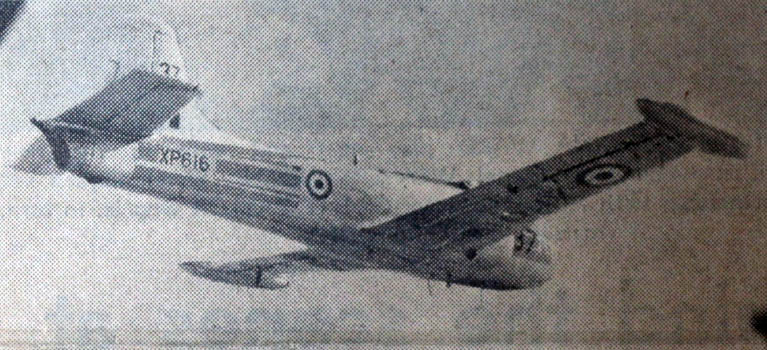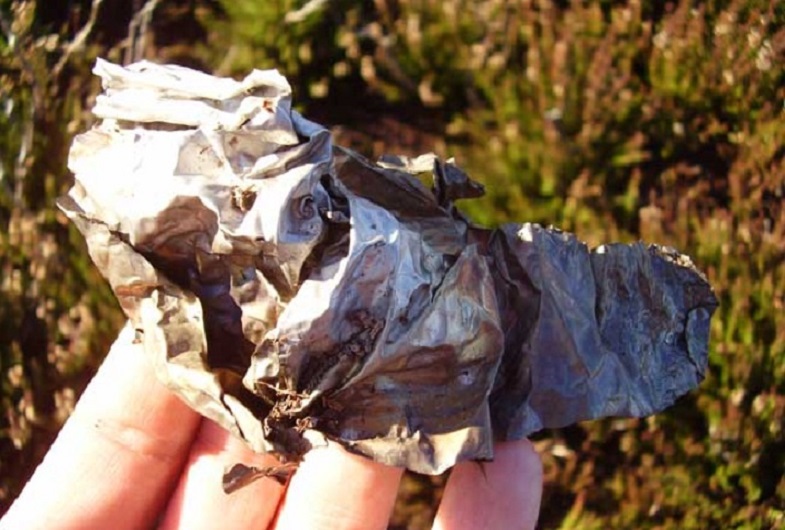During the afternoon of 14th September 1966 this Royal Naval pilot was undertaking a map reading navigation exercise with the RAF, as part of the training course at No.1 Flying Training School. The aircraft took off from Linton on Ouse airfield at 13.45hrs, six minutes later he contacted base to state that he was about to fly the first leg of the course of the training flight which was to have been flying a straight course slightly east of north for nine minutes. This was the last radio message picked up and later the aircraft was found to have crashed near Newgate Bank, on Rievaulx Moor, a few miles north of Helmsley. Sadly the pilot was killed in the crash. At the time of the crash low cloud was covering the moor and a strong wind was blowing. The resulting crash set fire to a large area of moorland which took two and a half hours to get under control. The aircraft wreckage was later removed from the moor and taken to Linton on Ouse for a detailed examination and almost nothing remains at the crash site today. While I have yet to find any further details surrounding the accident it was thought likely that the strong wind had played some part in the accident occurring and that the pilot was flying a near-reciprocal bearing compared to the direction of the first intended track. I would speculate that the pilot flew, or believed that he had flown, the first track but during this he deemed the weather too poor to continue so turned the aircraft around to return to the general area of his base. The strong wind had unfortunately blown the aircraft over the North York Moors and when he began to descend through cloud over what he assumed was the Vale of York he was infact over the Moors.
Jet Provost XP616 was built to contract KC/E.041 by British Aircraft Corporation (B.A.C.) at Luton and was delivered to No.1 Flying Training School on 3rd May 1962. Following the accident near Helmsley on 14th September 1966 Cat.5/FA(scrap) damage was the damage assessment and it was struck off charge. For a time XP616 carried the dayglow orange nose, wingtips and rear lower fuselage paint scheme though by comparing another photograph that I have of the crash with the image shown above it would appear to have been in this paint scheme when it crashed.
Pilot - Sub Lt Derek Clark Breen (Royal Navy), aged 21, of Washington, County Durham. Burial location unknown (probably Washington Cemetery).
Derek Breen was born in February 1945 and was the son of Derric Armstrong and Mary (nee Clark) Breen. As a child Derek attended Washington Grammar School before attending Dartmouth Naval College. He had been involved in the caputure of a poaching fishing vessel in the West Indies prior to undertaking flying training. He was attached to HMS Heron / RNAS Yeovilton, Fleet Air arm, on detachment with the RAF and training at Linton on Ouse at the time of his death. In 1966 his family lived at Valley Forge, Washington and his father was depty headmaster of Glebe Secondary School, Washington. Purely because his family lived very close to Washington Cemetery I assume he was buried there. His father Derric had served in the Royal Navy during the Second World War and details of his life can be found at "war-experience.org" but the marriage was later disolved and his father later would remarry. His father's biography "Young Men at War" was published in 1995 and he died in 2004.
A Middlesbrough Evening Gazette photograph of where the main fuselage came to rest. The wings both appear to have broken off as it travelled down the moor.
I began searching for this crash site way back when my interest developed in the late 1990s. I was told about the incident as a child by my grandmother who lived in Helmsley but with no real indication of where it actually crashed. The moor is a huge area to begin to search without any real indication of where to look. Even so, after various visits to generally walk across different parts of the moor searching for any sign of it, one piece was found by John Skinn in 2007. It would subsequently transpire that this is not the crash site though is almost certainly from the aircraft. This photograph above shows this items and while it resembles a piece of plain silver foil, which does, on this photograph look similar to a Kitkat wrapper, it is infact much thicker and stiffer and is made from stainless steel with signs of bluing by heat.
I then returned to this general area many more times from 2007 to 2024 before finally finding the place where the fuselage of the aircraft came to rest (as shown in the newspaper photograph above) just after the 58th anniversary of the crash. I am loathed to show this area in any detail as I know that people use my photographs to locate and then remove items from crash sites. I am confident that I am probably the first person since the 1960s to visit this crash site and would like to protect the site for the future.




